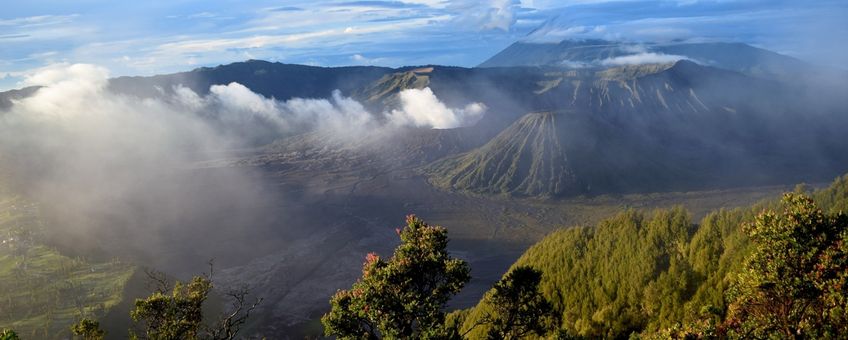
Can we see monkeys from space? Emerging technologies to map biodiversity
Leibniz Institute for Zoo and Wildlife ResearchThis international research is led by the Kunming Institute of Zoology from China, University of East Anglia, University of Leicester and the Leibniz Institute for Zoo and Wildlife Research.
Using a combination of satellite and ground data, the team proposes that it is now possible to map biodiversity with an accuracy that has not been previously possible. “There are ten times as many satellites in operation now as there were in the 1970s. Most people use maps from earth observation satellites on their mobile devices. The European Copernicus satellites now provide free global data every five days down to a resolution of ten meters. And think of small cube satellites that fit into a tote bag and weigh only two kilograms. Satellite technology has undergone a massive change and has never been so accessible,” explains Heiko Balzter from the National Centre for Earth Observation at the University of Leicester.
“However, satellites cannot observe most animals directly. Even today we cannot see monkeys from space. So most biodiversity is invisible to a satellite,” adds Douglas W. Yu from the School of Biological Sciences, University of East Anglia, who co-led the research.
 Therefore, scientists had to rely on indicators, such as land cover type or distance to roads or settlements, to infer the diversity of species and landscapes (biodiversity) for a particular area or region. Modern ecological models that can combine the information from satellite data and on species occurrence from ground surveys are now offering near real-time monitoring of the impacts of land management changes on biodiversity. “In our paper we propose to use an innovative mix of new technologies rather than a single remedy,” explains Yu.
Therefore, scientists had to rely on indicators, such as land cover type or distance to roads or settlements, to infer the diversity of species and landscapes (biodiversity) for a particular area or region. Modern ecological models that can combine the information from satellite data and on species occurrence from ground surveys are now offering near real-time monitoring of the impacts of land management changes on biodiversity. “In our paper we propose to use an innovative mix of new technologies rather than a single remedy,” explains Yu.
Among these new technologies which can be used to map animal occurrence and distribution are automated recording devices that either record animal sounds in a landscape, or take vital photographs of animals passing automatically triggered camera-traps. Modern genetic “fingerprinting” on a massive scale, called ‘high-throughput DNA sequencing’, can also tell which species live in a landscape, when applied to the genetic material that species leave behind in the environment in the form of saliva, urine, faeces, hair, feathers or blood. In addition, mass-collected bulk samples of small invertebrate organisms can be collected in the field with relative ease. For example, mosquitoes can be caught in a trap and blended into a ‘biodiversity soup’ to analyse the genetic material (DNA) in the blood of the animals they have been feeding on. Yu says, “DNA-based methods are a powerful way to circumvent the taxonomic bottleneck in biodiversity assessment, but they are only partially able to relieve the sampling bottleneck. In the end, the only way to cover whole landscapes is to combine satellites, sequencers, and statistics.”
Together, the data on animal sounds and photos, the DNA they leave behind, and satellite observations provide a wealth of biodiversity information. Balzter comments, “It may sound like a strange idea - satellites that can see the genetic make-up of the blood sucked by mosquitoes. Of course they cannot directly see that. But big data from genetic fingerprinting of animal DNA in a landscape combined with fine-resolution satellite data and sophisticated ecological models can. We need to work across subjects to make this happen. These are very exciting times. If our research can help to save a species that gives me a very strong sense of purpose to my job as a university professor.”
But the proposed approach in this study is not just future tech. “Earlier this year we have published the first example from three forest reserves in Sabah, Malaysian Borneo,” comments Andreas Wilting from the German Leibniz Institute for Zoo and Wildlife Research. “We used camera-trap data, in combination with high-resolution satellite data and modern community occupancy models to map biodiversity and show that mammalian biodiversity benefits from sustainable forest management in forests certified by the Forest Stewardship Council (FSC).” This example highlights how modern technologies can assist land managers to reduce their impact on biodiversity.
Many animal species are threatened with extinction. As a result of this, many countries have signed up to the United Nations Convention on Biological Diversity to try and stop this loss of species.
In 2010, the Convention met in Aichi, Japan, and agreed a set of targets, called the “Aichi Biodiversity Targets”. These targets aim to address the underlying causes of biodiversity, reduce the pressures on biodiversity, safeguard ecosystems and species, enhance the benefits from biodiversity and ecosystem services, and enable participatory planning, knowledge management and capacity building.
Lead author Alex Bush of the Kunming Institute of Zoology, China, and the Canadian Rivers Institute summarised: “For years, management decisions have typically relied on surrogates with unknown consequences for biodiversity conservation. With the parallel developments in remote sensing, genomics and more automated field recording, we now have the tools needed to collect data at a large scale. Methods to model these 'big data' sources are already available and could improve how we conserve and manage ecosystems, and the essential services they provide, in a period of intense global change.”
The paper, titled ‘Connecting earth observation to high-throughput biodiversity data’ is published in the scientific journal Nature Ecology and Evolution and a case study is published in the scientific journal Diversity and Distributions.
Text: Leibniz Institute for Zoo and Wildlife Research; Leicester University
Photo: Dr Beth Cole, Leicester University
